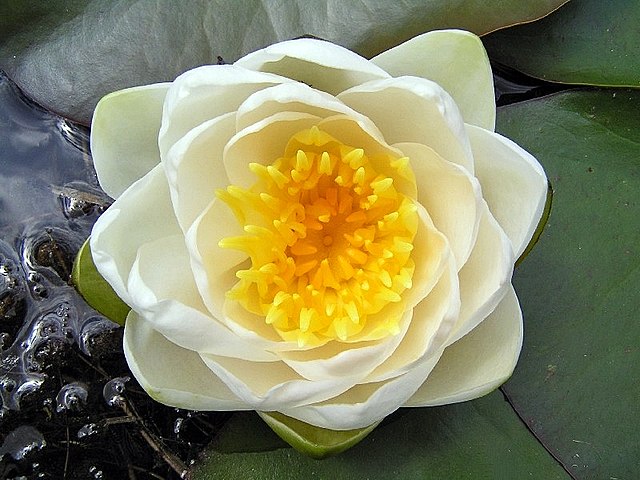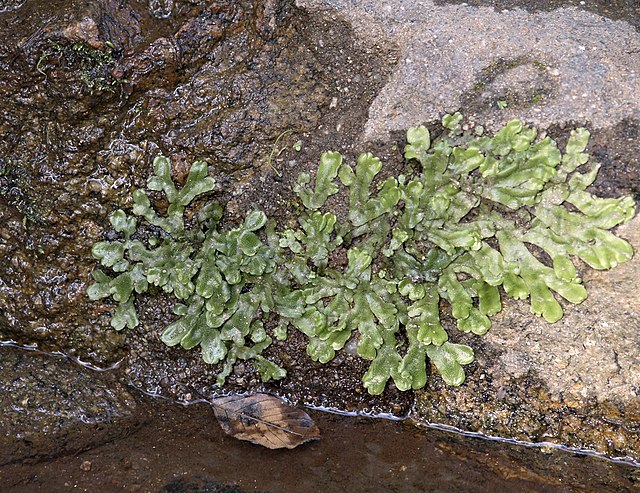Aquatic plants are plants that have adapted to living in aquatic environments. They are also referred to as hydrophytes or macrophytes to distinguish them from algae and other microphytes. A macrophyte is a plant that grows in or near water and is either emergent, submergent, or floating. In lakes and rivers, macrophytes provide cover for fish, substrate for aquatic invertebrates, produce oxygen, and act as food for some fish and wildlife.
The flower of Nymphaea alba, a species of water lily
Bud of Nelumbo nucifera, an aquatic plant.
Many liverworts grow either submerged or on land.
Ceratophyllum submersum, a free-floating plant that grows completely submerged
Fresh water or freshwater is any naturally occurring liquid or frozen water containing low concentrations of dissolved salts and other total dissolved solids. Although the term specifically excludes seawater and brackish water, it does include non-salty mineral-rich waters such as chalybeate springs. Fresh water may encompass frozen and meltwater in ice sheets, ice caps, glaciers, snowfields and icebergs, natural precipitations such as rainfall, snowfall, hail/sleet and graupel, and surface runoffs that form inland bodies of water such as wetlands, ponds, lakes, rivers, streams, as well as groundwater contained in aquifers, subterranean rivers and lakes. Fresh water is the water resource that is of the most and immediate use to humans.
Freshwater ecosystem
Image: Amazonas, Iquitos Leticia, Kolumbien (11472506936)
Image: Cove with Shamans Rock Olkhon Island Lake Baikal Russia (14594856552)
Image: Transition from Sawgrass to Coastal Habitat, NPS Photo (9250299462)








